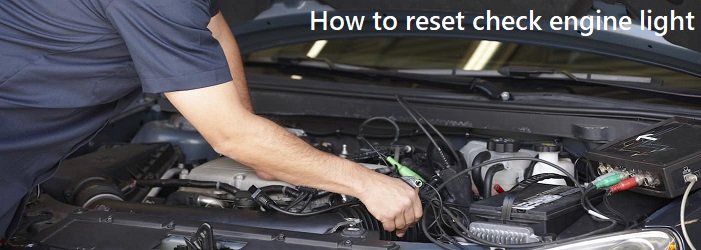How to Reset the Check Engine Light: My Go-To Methods That Work Every Time!

If you’ve ever seen that dreaded check engine light flash on your dashboard, you know the feeling—it’s like a punch to the gut. Over the years, I’ve dealt with this light popping up more times than I care to admit.
Whether it’s from something small like a loose gas cap or a more serious issue, resetting the check engine light can often be a quick fix once the problem is solved.
In this post, I’m going to walk you through the steps I’ve used to reset that light and save myself a trip to the mechanic.
Why the Check Engine Light Comes On
Before we jump into resetting the light, let me explain why it turns on in the first place. The check engine light is part of your car’s diagnostic system, which monitors a variety of functions in your engine.
It can light up for a range of issues, from a simple sensor misread to something more critical like a malfunctioning part.
From my experience, it’s always a good idea to diagnose the problem first (I’ll show you how below). But once you know it’s nothing major or you’ve already fixed the issue, resetting the light is the next step.
Is It Safe to Reset the Check Engine Light?
Yes, it’s safe to reset the check engine light—as long as you know what caused it and have addressed the issue. Ignoring serious problems can lead to even bigger (and more expensive) headaches. So, once you’ve taken care of the problem, resetting the light can give you peace of mind.
4 Simple Ways to Reset the Check Engine Light
Over the years, I’ve tried several methods to reset the check engine light. Here are the four that have worked best for me.
1. Using an OBD-II Scanner (My Top Recommendation)
This is by far the easiest and most reliable way to reset the check engine light. An OBD-II scanner is a diagnostic tool that can read your car’s error codes and reset the light with just a few clicks.
Steps to reset using an OBD-II scanner:
- Plug the scanner into the OBD-II port (usually located under the steering wheel).
- Turn the ignition to the “on” position without starting the engine.
- Follow the scanner’s instructions to read and clear the error codes.
- Once cleared, the check engine light should turn off.
I highly recommend getting an OBD-II scanner if you don’t have one. I’ve saved a ton of time and money by diagnosing and resetting issues on my own with this handy tool.
2. Disconnecting the Battery (Old-School Method)
Before I had an OBD-II scanner, this was my go-to method. It’s simple and usually works, but it does come with a small inconvenience—resetting your car’s clock and radio settings.
How to do it:
- Turn off the car and open the hood.
- Use a wrench to disconnect the negative terminal from the battery.
- Wait about 15 minutes for the system to reset.
- Reconnect the battery and start the car.
The check engine light should be off once the battery is reconnected. Just be prepared to reprogram things like your radio stations.
3. Let the Light Turn Off on Its Own
Sometimes, if the issue that caused the check engine light has been fixed (like tightening a loose gas cap), the light will turn off automatically after a few driving cycles. This happened to me once after I simply secured my gas cap.
What to do:
- Make sure the issue is resolved, like tightening the gas cap.
- Drive your car normally for 30-50 miles over the course of a few days.
If the light turns off on its own, you’re good to go! If not, it might be time to try another method or visit a mechanic.
4. Turn the Ignition On and Off
This is one of the simplest tricks, but it doesn’t work on all cars. Still, it’s worth trying if you don’t have an OBD-II scanner or don’t want to disconnect the battery.
Here’s how:
- Turn the ignition key to the “on” position without starting the engine.
- Turn it off and repeat this step 3-4 times.
- On the final attempt, start the car.
This method works by clearing the system and can sometimes force the check engine light to reset.
When to See a Mechanic
While resetting the check engine light can solve your problem, if the light comes back on after you’ve reset it or if you’re unsure what’s causing it, it’s best to see a professional.
I’ve learned that sometimes the issue can be deeper than it seems, and a mechanic’s expertise is necessary to prevent long-term damage.
Final Thoughts
Resetting the check engine light doesn’t have to be a daunting task. Whether you’re using an OBD-II scanner or simply disconnecting the battery, you can easily handle it yourself. Just remember to always address the underlying issue before resetting the light.
Got any questions or need more tips? Drop a comment below—I’d love to help out based on my own experience!





